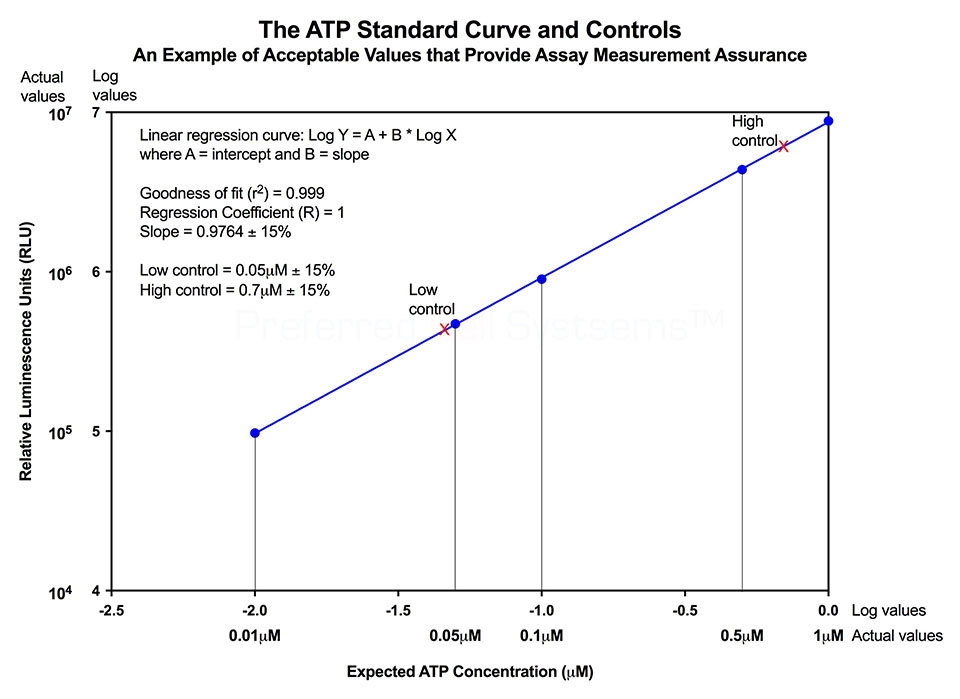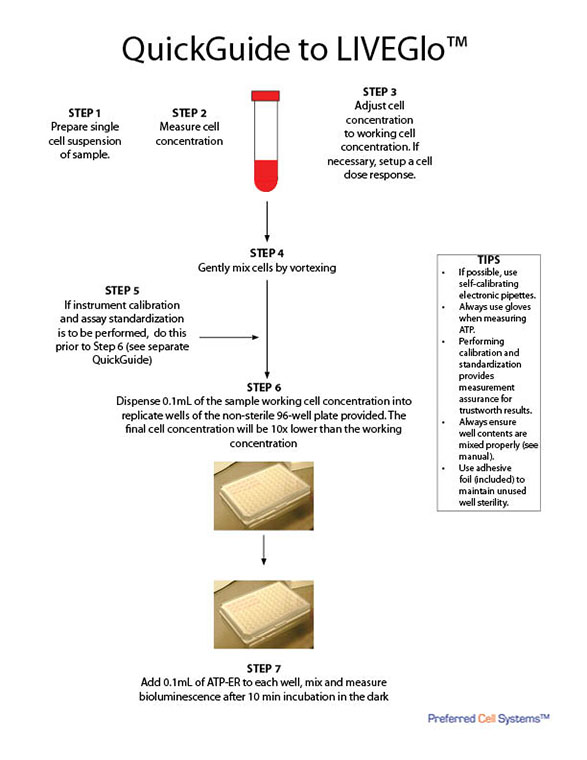LIVEGlo™
Metabolic Viability and Cellular Functionality Assay for
Virtually Any Cell Type to Determine Cellular and Mitochondrial Integrity
Uses
- Determine if cells are metabolically viable.
- Determine if cells exhibit sufficient metabolic activity to grow.
- Best for fresh or continuously dividing cells.
- Fully standardized viability and cellular functionality assay.
- Results within 30 minutes.
- Directly compare viability results from single or multiple cell sources over time.
- Provides additional assurance that a dye exclusion viability method does not produce false positive results.
- Incorporates proven ATP bioluminescence technology for fast, highly sensitive and reliable results.
- Simple, time efficient and cost effective.
No additional proficiency testing is required if the calibration and standardization procedure is performed. The values you obtain from each calibration and standardization can be logged and used for certification that the assay has been performed correctly and that the results are trustworthy.

- Virtually any mammalian cell type
To order click the catalog number link in the table below.
LIVEGlo™ Assay Kits
| Assay Type | Catalog Number | Number of Plates |
|---|---|---|
| LIVEGlo™ | PS-96-1 | 1 |
For Research Use Only. Not for clinical diagnostic use.
Luminescence or multimode plate reader.
- ATP standard
- ATP controls
- ATP Enumeration Reagent
- Non-sterile, 96-well plates
LIVEGlo™ is a metabolic viability test, whereas all dye exclusion viability tests are based on the ability of the dye to enter the cells and bind with an intracellular component. Metabolic viability assays measure biochemical changes that are directly related to the metabolic status of the cells. Therefore, if cells are dead or dying, their metabolic status will be nonexistent or very low. Many dye exclusion viability tests detect membrane permeability or membrane integrity. Cell membranes can be permeable to small molecules, but the cell may not be dead or dying.
Why are the results of a dye exclusion viability test given as percentages, but results from LIVEGlo™ are not?
This is another difference between the two types of viability assay. Metabolic viability assay output is given as a biochemical readout in luminescence units, or if the assay is standardized, as ATP concentrations in µM. For many cell types, the lowest ATP concentration indicate unsustainable or loss of metabolism is between 0.01 and 0.04µM. For cells capable of proliferating, ATP values in this range or lower is an indication that the cells cannot support proliferative activity. For dye exclusion viability assays, a percentage of cells that exclude the dye is an indication of the live cells. However, for all percentage value, a reference must be available. So if 85% of the cells are indicated to be alive by dye exclusion viability, the question is, 85% of what? What is the number or concentration that this 85% refers to? With metabolic viability, this question is unnecessary, because the ATP value is a direct indication of the metabolic status of the cells. If th cells are not producing ATP, they are dead.

Download the LIVEGlo™ Technical Manual
Download the ATP Optimization Kit Protocol for First-Time Users
Download Information of Luminometer Setup and RLU to ATP Conversion

